15 Award-Winning Photos From The Wildlife Photographer of The Year Competition
Each year, we celebrate photographers across the globe through various contests, one of which is the renowned Wildlife Photographer of the Year competition. Founded in 1965 by BBC Wildlife Magazine (formerly known as Animals), this competition underwent a transformation in 1984 when it joined forces with the Natural History Museum. Presently, the annual competition and its accompanying touring exhibition are under the management and ownership of the Natural History Museum, located in London.
In 2023, the Wildlife Photographer of the Year competition featured an impressive 49,957 entries from 95 countries, with the winners unveiled during an awards ceremony in South Kensington. Following this introduction, we'll take you through the remarkable work of the 15 winners of the contest.
For more info about the contest, you can check out the following websites: nhm.ac.uk | Instagram | Facebook | Twitter
#1. The Ancient Mariner By Laurent Ballesta, France, Winner, Portfolio Award
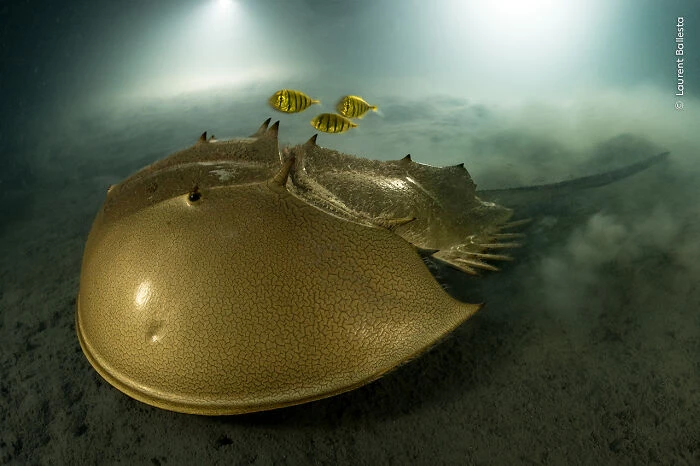 Source: Natural History Museum
Source: Natural History Museum
Laurent Ballesta, a marine biologist and photographer, captured 'The Golden Horseshoe' image in the Philippines. It shows a horseshoe crab moving through the mud, with young golden trevallies ready to snatch up the food it uncovers.
Horseshoe crabs are ancient creatures but are threatened by habitat loss and overfishing for their blood used in vaccines. However, there's hope for their survival in the protected waters of Pangatalan Island.
#2. Last Breath Of Autumn By Agorastos Papatsanis, Greece, Winner, Plants And Fungi
 Source: Natural History Museum
Source: Natural History Museum
Agorastos Papatsanis captured the enchanting moment when a fungus released its spores in the forest. He protected his camera from moisture with a silver umbrella and covered the flash with a plastic bag. The colorful effects are created as light passes through spore-laden air currents and rain.
Parasol mushrooms release billions of tiny spores from under their cap, which then float through the air, often unseen. Some of these spores find a place with moisture and nutrients, allowing them to grow underground networks in the forest.
#3. Last Gasp By Lennart Verheuvel, The Netherlands, Winner, Oceans: The Bigger Picture
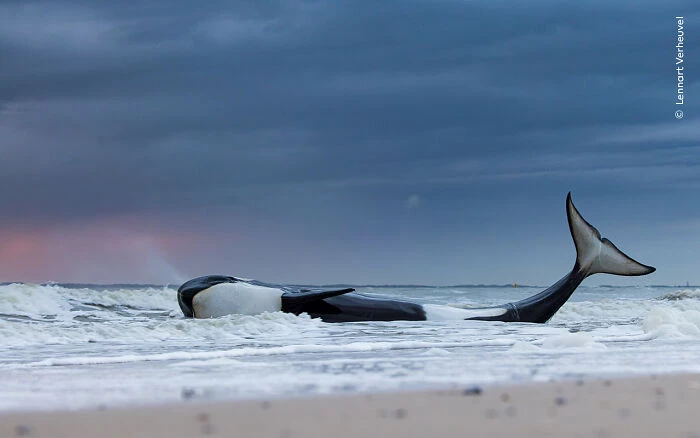 Source: Natural History Museum
Source: Natural History Museum
#4. Face Of The Forest By Vishnu Gopal, India, Winner, Animal Portrait
 Source: Natural History Museum
Source: Natural History Museum
#5. Hippo Nursery By Mike Korostelev, Russia, Winner, Underwater
 Source: Natural History Museum
Source: Natural History Museum
Mike Korostelev photographed a mother hippopotamus and her two calves resting in a shallow, clear-water lake. He's been visiting them for over two years, and they're used to his boat.
The author took this image in just 20 seconds to avoid alarming the mother. Hippos produce one calf every two to three years, and their slow-growing population is vulnerable to habitat degradation, drought, and illegal hunting for meat and ivory.
#6. Lights Fantastic By Sriram Murali, India, Winner, Behaviour: Invertebrates
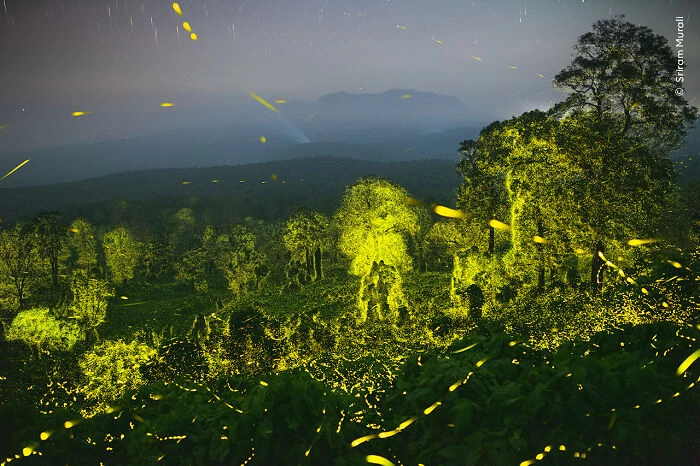 Source: Natural History Museum
Source: Natural History Museum
Sriram Murali captures a forest illuminated by fireflies in a stunning night sky. He created this image by combining fifty 19-second exposures over 16 minutes, showing the firefly flashes. These fireflies start twinkling at twilight, gradually increasing their frequency until they pulse together like a wave across the forest.
Fireflies, actually a type of beetle, use bioluminescence to attract mates, and darkness is vital for this process. Light pollution disrupts many nocturnal creatures, with fireflies being particularly affected.
#7. Life On The Edge By Amit Eshel, Israel, Winner, Animals In Their Environment
 Source: Natural History Museum
Source: Natural History Museum
Amit Eshel captures a cliffside showdown between two Nubian ibex. Hiking to a cliff-top vantage point, Amit approached carefully, using a wide-angle lens to frame the dramatic clash of these two ibexes against the rugged backdrop.
The battle unfolded for about 15 minutes until one male submitted, and they separated without major injuries. As mating season approaches, the males' coats darken and their neck muscles bulk up. Rivals rear up on their hind legs and engage in head-butting contests, sometimes resulting in broken horns.
#8. Owls’ Road House By Carmel Bechler, Israel, Winner, 15-17 Years
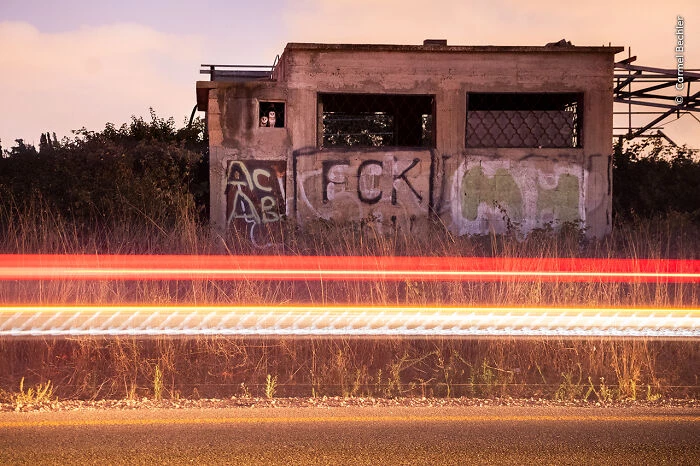 Source: Natural History Museum
Source: Natural History Museum
Carmel Bechler found barn owls in an abandoned concrete building near a busy road. He revisited the spot from the previous year with his father, using their family car as a hiding place. Carmel took advantage of natural light and extended exposure times to capture light trails from passing traffic.
Israel boasts the world's densest barn owl population. A national project has placed nesting boxes near agricultural fields, encouraging owls to nest close to farmlands. This has led to a reduction in pesticide use on farms, as barn owls help control rodent populations that can harm crops.
#9. The Art Of Courtship By Rachel Bigsby, UK, Winner, Natural Artistry
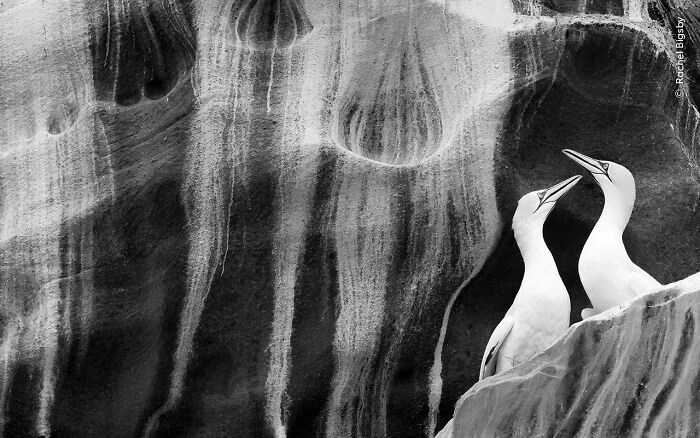 Source: Natural History Museum
Source: Natural History Museum
Rachel Bigsby captures a gannet pair against guano-painted sandstone cliffs from her boat in a rough sea swell. Her initial challenge to showcase the gannets and cliffs transformed when she spotted a pair on a lower ledge, their necks entwined, framed by guano streaks.
The Isle of Noss welcomes over 22,000 northern gannets each summer for breeding. These birds use ledges shaped by the elements. The species was heavily impacted by the 2022 avian flu outbreak.
#10. Whales Making Waves By Bertie Gregory, UK, Winner, Behaviour: Mammals
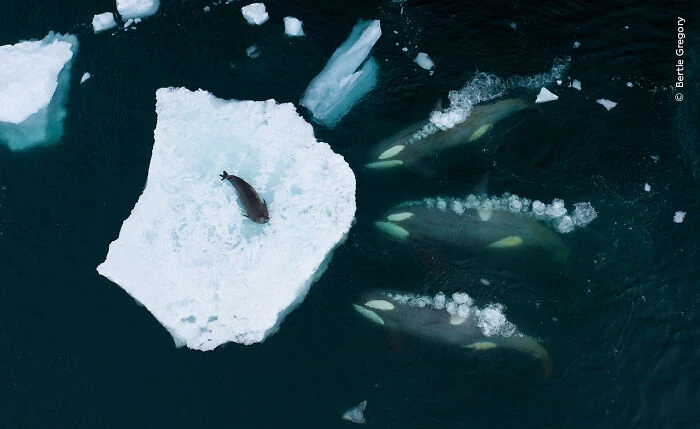 Source: Natural History Museum
Source: Natural History Museum
Bertie Gregory follows orcas preparing to 'wave wash' a Weddell seal during two month-long expeditions. Battling harsh conditions, he captured this behavior using his drone.
These orcas, part of a group known for hunting seals by creating waves to wash them into the water, face a challenge. As rising temperatures reduce ice floes, seals spend more time on land, potentially endangering their 'wave washing' behavior.
#11. The Unprotected By Karine Aigner, USA, Winner, Photojournalist Story Award
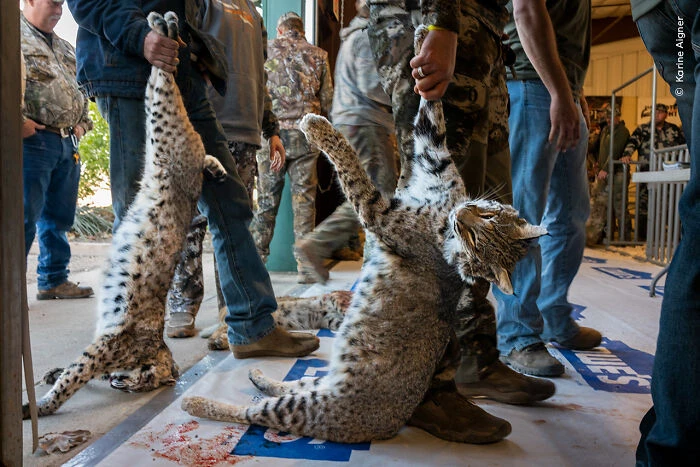 Source: Natural History Museum
Source: Natural History Museum
#12. The Tadpole Banquet By Juan Jesús Gonzalez Ahumada, Spain, Winner, Behavior: Amphibians And Reptiles
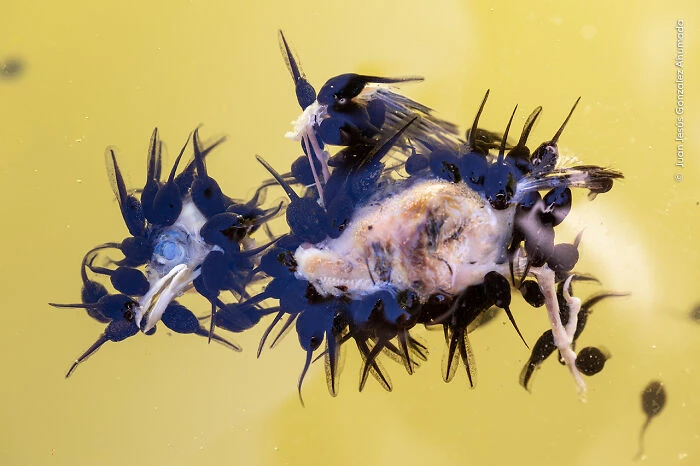 Source: Natural History Museum
Source: Natural History Museum
#13. Birds Of The Midnight Sun By Knut-Sverre Horn, Norway, Winner, Urban Wildlife
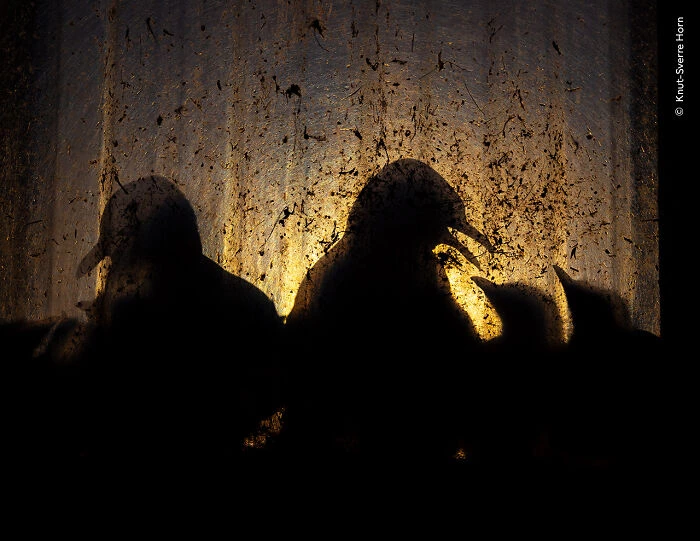 Source: Natural History Museum
Source: Natural History Museum
#14. The Tourism Bulldozer By Fernando Constantino Martínez Belmar, Mexico, Winner, Photojournalism
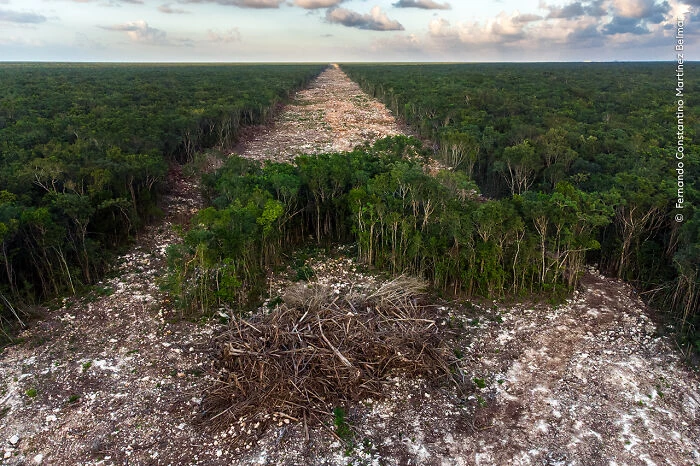 Source: Natural History Museum
Source: Natural History Museum
#15. The Dead River By Joan De La Malla, Spain, Winner, Wetlands - The Bigger Picture
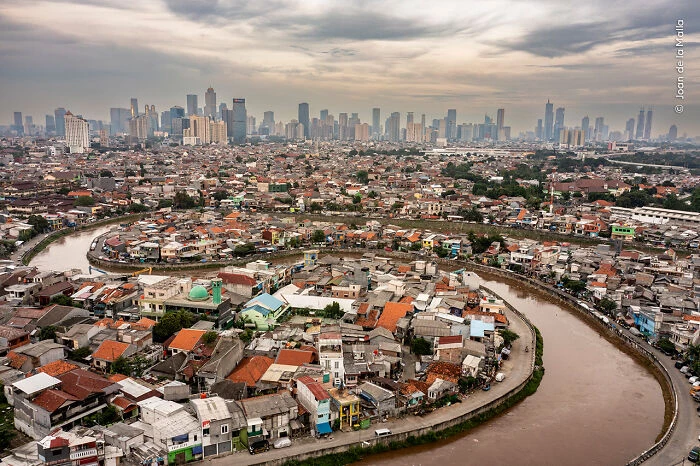 Source: Natural History Museum
Source: Natural History Museum
Joan de la Malla captures the polluted Ciliwung River in Jakarta, Indonesia, using an aerial perspective. He made several visits to find a clear view amid lower air pollution, creating a poignant image that showcases one of the world's most contaminated rivers. The photograph serves as a stark reminder of the rising global problem of river pollution. The Ciliwung River is choked with plastic waste, human sewage, agricultural chemicals, and industrial pollutants. Consequently, Jakarta's residents are forced to rely on groundwater for drinking water, leading to widespread subsidence and the city's sinking.